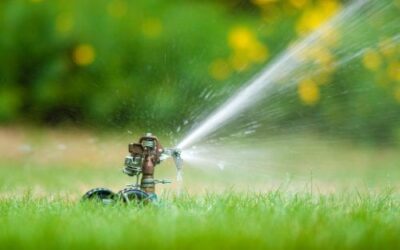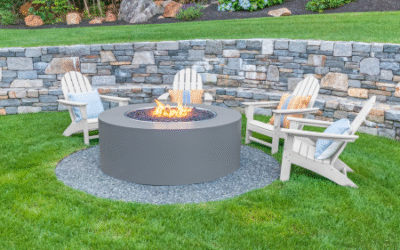As the cooler days of November roll in, many of us are left with piles of leaves, grass clippings, and garden debris from our autumn cleanup efforts. While it might be tempting to bag everything up for curbside pickup, there’s a much more sustainable and beneficial option: composting. Composting in November is not only an environmentally friendly way to recycle fall yard waste, but it also creates nutrient-rich soil that can benefit your garden in the spring.
In this guide, we’ll walk through how you can turn your fall yard waste into valuable compost, why composting is beneficial, and some practical tips to get started with composting in November. By the end, you’ll be ready to recycle those fallen leaves and yard waste into something that can enrich your soil and improve your landscape.
Why Composting in November Makes Sense
Fall brings an abundance of organic material—leaves, grass clippings, garden waste, and even those pumpkin remnants after Halloween. November is the perfect time to begin or enhance your composting efforts because you have access to a wealth of materials that are ideal for composting.
Composting is the process of breaking down organic material into nutrient-rich compost, often referred to as “black gold” by gardeners. This process is driven by microorganisms and natural decomposers that break down organic waste into a substance that can be used to improve soil structure, retain moisture, and add essential nutrients to your garden.
During the fall, many of the materials you’d typically throw away, like leaves and grass clippings, can instead be added to your compost pile to start breaking down over the winter months. By the time spring arrives, you’ll have a rich compost ready to use in your garden.
What Can You Compost in November?
Autumn provides a variety of organic materials that are perfect for composting. Some of the most common yard waste that you can recycle into your compost bin includes:
- Fallen leaves: Leaves are one of the most abundant sources of organic material in the fall. While you may rake and bag them up, consider composting them instead. Leaves add carbon to your compost, which helps balance the nitrogen-rich materials like grass clippings.
- Grass clippings: These are great for adding nitrogen to your compost pile, which is essential for the decomposition process. If you’ve mowed your lawn recently or have leftover clippings, toss them into your compost.
- Garden debris: As the growing season winds down, many plants start to die off. Instead of throwing away old plants, vines, and flowers, compost them! Just be careful not to add any diseased plants, as they can introduce unwanted pathogens into your compost.
- Pumpkin remnants: After Halloween, many of us are left with decaying pumpkins. These make an excellent addition to your compost bin as they break down easily and add moisture to the pile.
- Vegetable scraps: Although not specific to fall, kitchen scraps like vegetable peels, fruit cores, and coffee grounds can be added to your compost throughout the season. These materials are full of nitrogen, which is key for composting.
- Mulched branches and twigs: If you’ve been pruning trees or shrubs, you can add small, mulched branches and twigs to your compost. Be sure to break them down into smaller pieces to speed up decomposition.
Balancing Your Compost Pile
A successful compost pile requires a balance of two types of materials: browns (carbon-rich) and greens (nitrogen-rich). Brown materials include things like dry leaves, straw, and small branches, while green materials include grass clippings, kitchen scraps, and fresh garden debris.
For optimal decomposition, aim for a ratio of about three parts brown material to one part green material. Since fall is full of carbon-rich materials like leaves, this is a great time to stock up on browns. If you find yourself with more greens, such as grass clippings or kitchen waste, try to layer them with the browns to maintain the right balance.
Also, remember to keep your compost pile moist but not soggy. In November, depending on where you live, rain might provide enough moisture, but if your pile starts to dry out, you can add water as needed to keep it damp.
How to Build a Compost Pile in November
If you’re starting from scratch, building a compost pile in November is easy. Here’s a step-by-step guide to get you started:
- Choose a location: Pick a spot in your yard that’s convenient but out of the way. A shaded area is ideal to prevent the compost from drying out too quickly.
- Create a base: Start by layering some coarser materials like small branches or straw at the bottom of your pile. This helps with airflow, which is important for the decomposition process.
- Add alternating layers: Begin layering your browns (leaves, straw, small branches) and greens (grass clippings, kitchen scraps) in alternating layers. A good rule of thumb is to make each layer about 2-4 inches thick.
- Maintain airflow: Turn your compost pile every few weeks to introduce air into the pile and speed up decomposition. Turning helps the microorganisms break down the material faster.
- Monitor moisture: Keep the pile moist, but not too wet. It should feel like a wrung-out sponge—damp to the touch but not dripping.
- Let it rest: As the temperatures drop in November, the decomposition process will slow down a bit, but it won’t stop completely. Your pile will continue to break down over the winter, and by spring, you should have nutrient-rich compost ready to use in your garden.
The Benefits of Composting Yard Waste
By composting your yard waste in November, you’ll not only reduce the amount of waste you send to the landfill, but you’ll also create a valuable resource for your garden. Compost improves soil structure, adds essential nutrients, and helps retain moisture in the soil. It also reduces the need for chemical fertilizers, which can be harmful to the environment.
Composting also helps reduce greenhouse gas emissions. When organic waste like leaves and grass clippings are sent to the landfill, they break down without oxygen, producing methane—a potent greenhouse gas. By composting, you can help reduce this environmental impact.
Need Help with Yard Waste? Jack’s Lawn Care & Landscaping Can Help
If you’re looking for help managing your yard waste or need assistance with composting, Jack’s Lawn Care & Landscaping in Charlottesville is here to assist. We offer professional yard cleanup services and can help you recycle your fall leaves and yard debris in an eco-friendly way. Whether you’re starting a compost pile or just want to ensure your yard looks great through the fall season, our team is ready to help. Reach out to us today to learn how Jack’s Lawn Care & Landscaping can help you transform your yard this fall, and keep it looking beautiful and healthy throughout the year.



